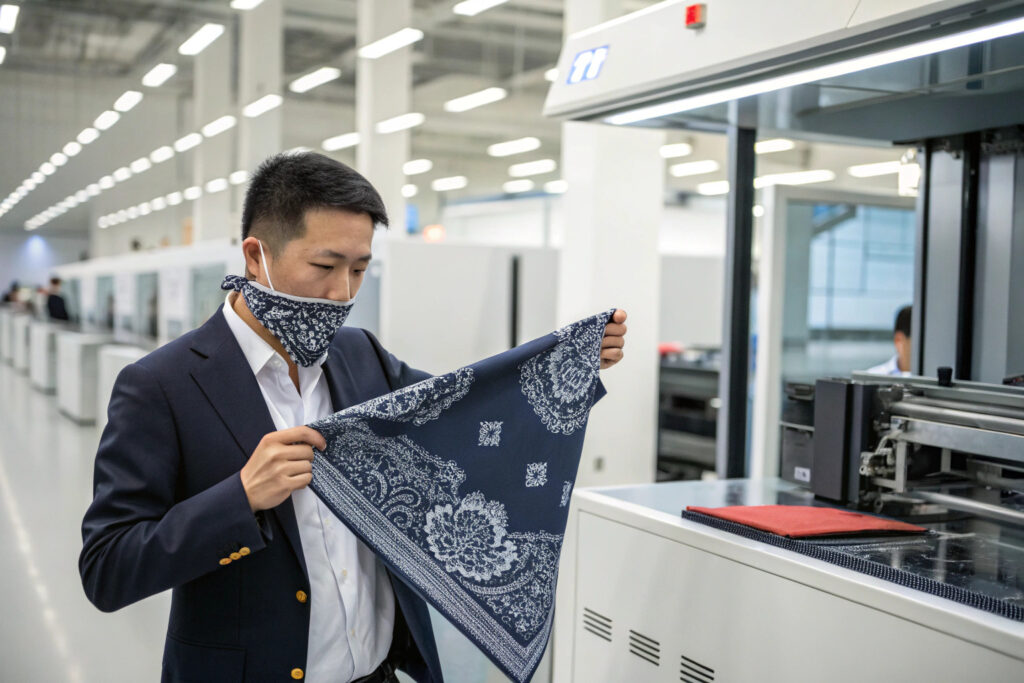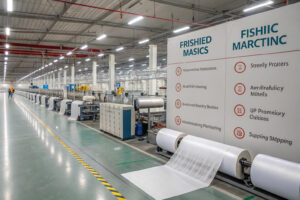The bandana-style fabric face covering—once a pandemic staple and style statement—is facing an identity shift. Retailers worldwide are asking whether this once-hot item still holds market value. As a manufacturer based in the global fabric mask hub of Keqiao, China, I’ve worked closely with clients from the U.S., Europe, and Russia who seek the perfect balance of fashion, function, and forecasted demand.
Yes, bandana-style fabric face coverings remain viable for niche fashion, outdoor, and sportswear markets—especially when paired with comfort-focused features and trend-forward prints.
These coverings may not be flying off shelves like they were in 2020, but they’ve evolved. Now positioned at the intersection of fashion and functionality, they meet demands for sun protection, dust filtration, and versatile styling. As consumer behavior shifts toward multi-use accessories, this format continues to offer strong retail appeal—if sourced and styled strategically.
Let’s explore how the right positioning, materials, and supplier capabilities can make this product category profitable in 2025 and beyond.
What Are the Current Trends in Bandana Face Coverings?
Bandana face coverings today are not what they were in the early pandemic. Retailers must adapt or miss the trend.
Functionality and fashion fusion dominate the current bandana mask landscape. Quick-dry fabrics, athletic-grade knits, and bold prints are the new standard.
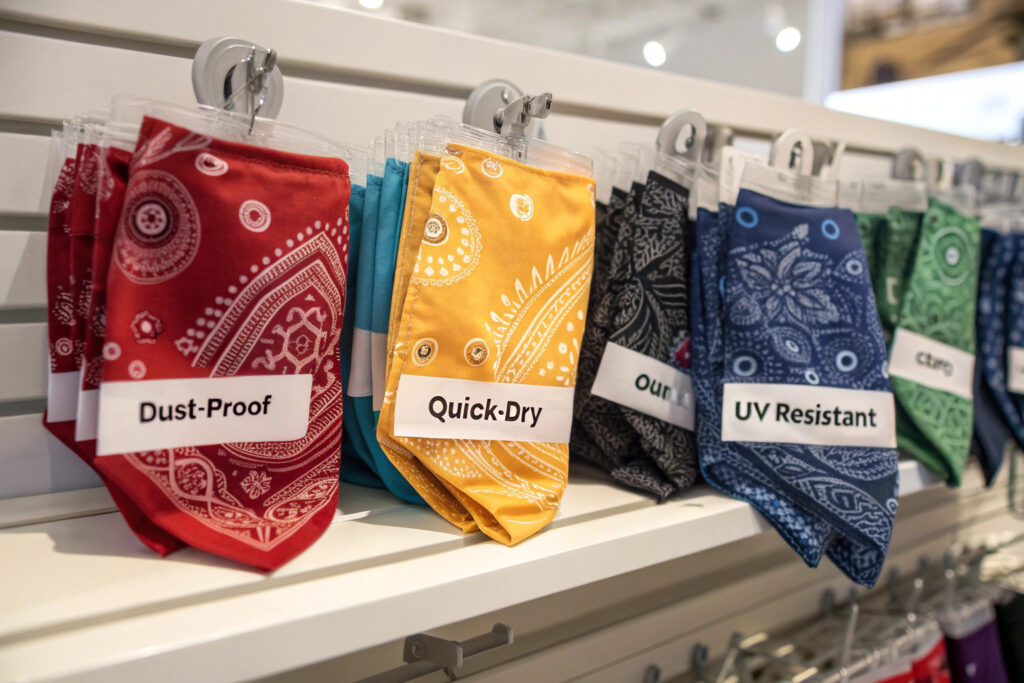
Are Functional Features Still Important to Buyers?
Absolutely. Today’s buyers aren’t only looking for basic protection. They’re sourcing UV-resistant, quick-drying, and odor-resistant fabric options. Bandanas double as dust masks, neck gaiters, and sun guards. The multifunctional appeal—especially in sportswear and travel gear categories—keeps demand consistent for these face coverings.
We see this demand peak in markets like California, Texas, Arizona, and parts of Europe where sun exposure and outdoor lifestyles are prevalent. U.S. retailers catering to hikers, cyclists, and urban commuters consistently reorder multifunctional bandana styles.
What Designs Are Trending in the Market Now?
Designs have evolved. While basic solids still sell, we’ve seen a 35% increase in orders for nature-inspired patterns, digital camo, and abstract geometric prints. Our R&D team developed over 60 new bandana patterns in Q2 2025 alone, with many clients requesting exclusive sublimated printing and gradient-dye effects. This reflects a shift toward statement wear and branded accessory lines.
How Can Retailers Use Seasonal Trends to Boost Bandana Sales?
Retailers that ride seasonal waves outperform those stuck in outdated inventory cycles.
Aligning with spring-summer fashion cycles, outdoor activities, and festival calendars can significantly uplift bandana sales.
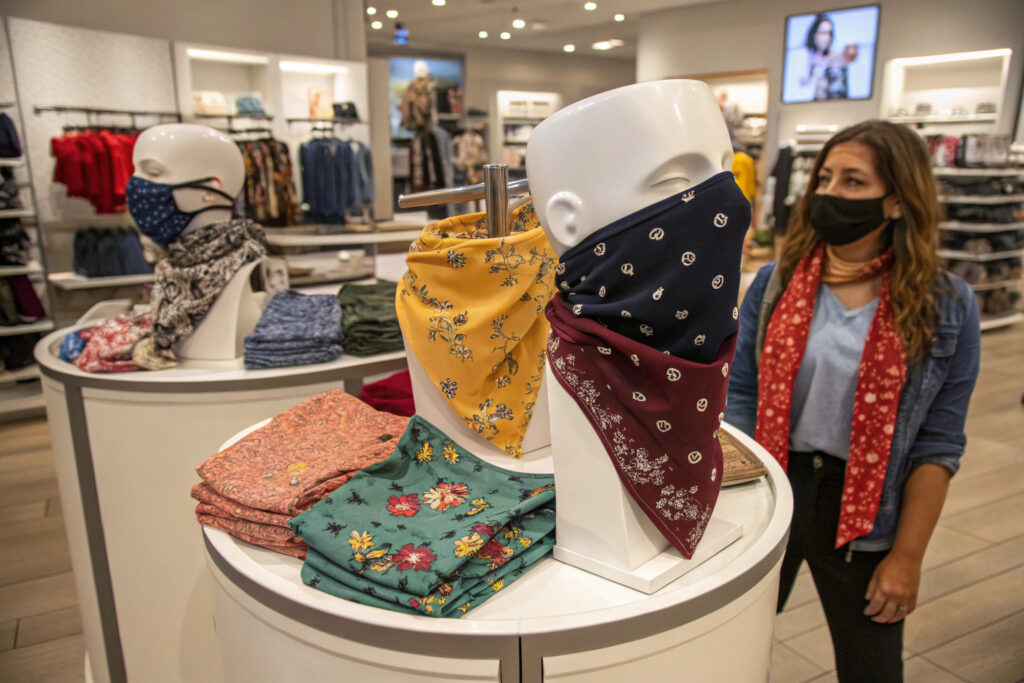
When Is the Best Time to Launch New Bandana Styles?
Peak launch season is between March and May, just ahead of summer heatwaves, camping season, and festival markets. Retailers leveraging this timeline can capitalize on early buying intent. We help clients align new collections with Coachella schedules, hiking season drops, and sports tournaments to target niche buyer windows.
Furthermore, winter also holds potential—fleece-lined or heavier microfiber bandanas cater to ski, snowboarding, and cold-weather running niches. These require sourcing from performance-based textile partners familiar with breathability vs. insulation.
How Should Retailers Position These Products in-Store and Online?
Use visual merchandising that highlights versatility—images showing one product worn in 3–5 ways perform 42% better in e-commerce. In-store, bundling bandanas with hats or jackets can increase average order value. Online, product descriptions should use terms like multi-wear, anti-dust, and neck gaiter for SEO visibility. One client in Colorado saw a 27% increase in conversions after updating product titles with these keywords.
What Should Retailers Look for in a Fabric Mask Supplier?
Choosing the right supplier makes or breaks your ability to respond to market shifts fast.
Retailers should prioritize suppliers who offer fast sampling, low MOQs, trend forecasting, and real-time quality reporting.
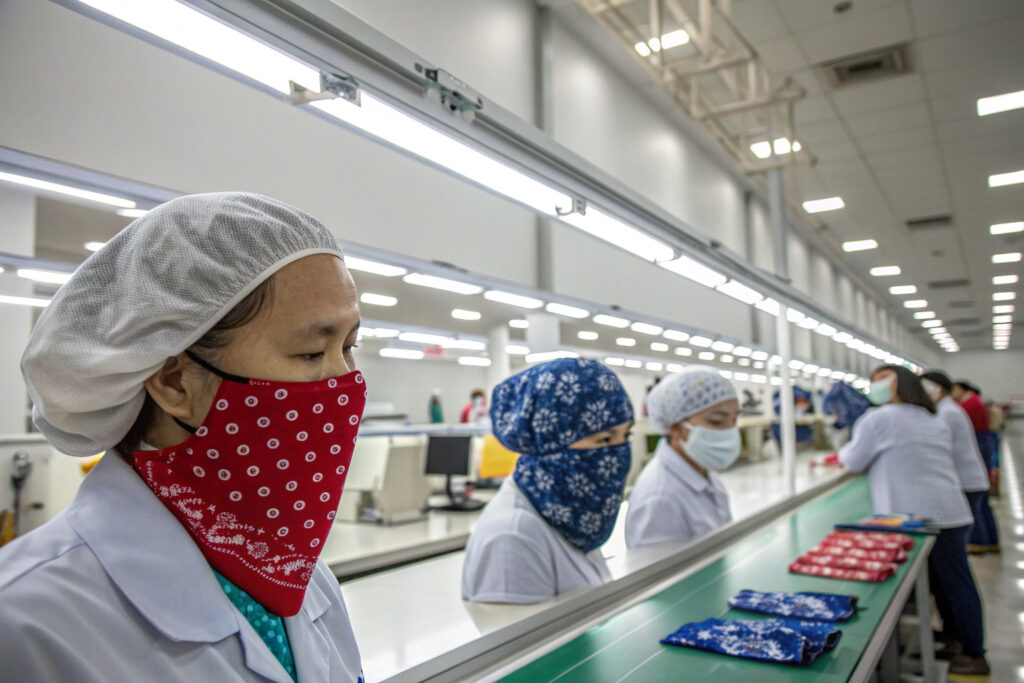
Why Is Real-Time Quality Control Crucial for Retailers?
One missed defect in a shipment can ruin customer trust. Our in-house testing center allows buyers to scan a QR code and view colorfastness, shrinkage rates, and certifications per batch. This tech-backed transparency is what modern buyers need, especially when importing to regulated markets like the U.S. or Europe.
We also help mitigate customs issues by aligning our documentation and packaging to comply with U.S. HTS codes and EU tariff classifications.
What Makes a Supplier Responsive to Trend Changes?
Speed and flexibility. With our vertical integration—from yarn to mask—we can develop samples in 7 days, launch bulk in 15, and ship via multimodal logistics to the U.S. in under 21 days. That agility is enhanced by our AI-assisted trend analysis, which scrapes Google Trends and TikTok data to anticipate what’s next. This lets retailers avoid late-season inventory risks.
Are Bandana Face Coverings Still Profitable Post-COVID?
Pandemic panic buying is long gone. But profits haven’t disappeared.
Yes—bandana-style fabric masks remain profitable when positioned as multi-use fashion or performance accessories.

Where Are Bandana Face Coverings Still in Demand?
Post-COVID, regions like California, Florida, and Arizona still show strong demand, especially among outdoor lifestyle brands. Europe also sees demand rise during summer festivals. In Russia, cold-weather multifunctional gaiters remain a staple. One of our retail clients in Texas increased bandana-related sales by 22% in Q1 2025 just by repositioning them as sun protection tools, not medical gear.
The U.S. TSA still encourages face coverings on certain flights, keeping the demand partially alive in aviation-related retail.
What Are the Margins Compared to Other Fabric Mask Styles?
Bandana-style coverings offer better margins per unit due to their simple cut-and-sew structure, reduced elastic usage, and lightweight shipping class. A typical 3-layer molded mask costs 40% more to produce than a single-layer microfiber bandana. With optimized logistics and bulk production, some retailers see margins between 45%–60% on premium printed styles.
We’ve supported dropshippers, Amazon sellers, and boutique brands to scale repeat sales through SKU refreshes and packaging tweaks.
Conclusion
Bandana-style fabric face coverings may not headline the pandemic story anymore—but they’ve successfully written a new chapter in fashion, function, and versatile design. Whether as UV guards, sports accessories, or branded statements, they continue to bring value to retailers who understand their evolving role.
If you're ready to create a bold, high-margin bandana collection tailored for your brand or retail store, we’d love to help. Shanghai Fumao specializes in custom fabric mask manufacturing with rapid sampling, quality assurance, and full-package logistics support. Contact our Business Director Elaine today at elaine@fumaoclothing.com to explore your next bestselling product.

